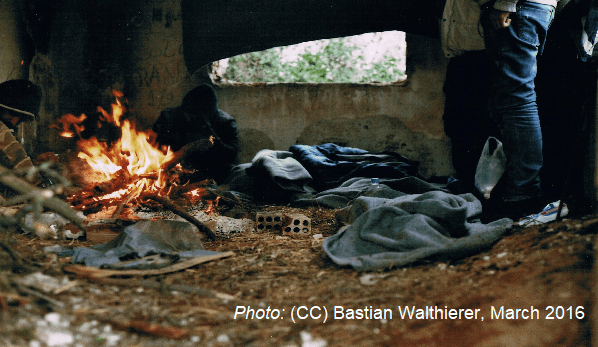As authorities seek to stem the routes most widely-used to seek asylum in Europe, rendering journeys increasingly dangerous, irregular arrivals through the Balkans are on the rise. 55,000 people entered the EU irregularly through the Western Balkan route in 2021, a significant increase compared to previous years. Many are Afghans fleeing the Taliban regime who face dire conditions along the region’s borders.
The European Border and Coast Guard Agency (FRONTEX) detected 55,310 irregular arrivals to the EU via the Western Balkan route in 2021 up until 15 December. The figure represents a 138 per cent increase compared to the same period in 2020 and 387 per cent compared to 2019. The majority of these people were of Moroccan, Syrian and Afghan descent. According to aid workers, routes through the Balkans have become the only viable alternative for people on the move as member states like Greece and Italy have fortified their borders and the Central Mediterranean route grows increasingly deadly.
After months of travelling, Afghans fleeing the Taliban regime have started to arrive in Bosnia and Herzegovina (BiH) hoping to cross the border to Croatia and enter the EU. “Last winter, we witnessed a higher number of families with little children crossing the Bosnian-Croatian border,” stated Sara Kekus from ECRE member, the Center for Peace Studies. “This year, having in mind the situation in Afghanistan and still no systemic EU evacuation scheme for all those fleeing the Taliban regime, there is no reason to expect a different situation”. As NGOs and activist networks have documented, people on the move are facing widespread and systematic violent pushbacks to BiH by Croatian authorities with 4,905 persons affected between July and November 2021. Thousands of Afghans are thus stuck in Bosnia where conditions are increasingly dire. Kathy James from Medical Volunteers International states that: “The cold weather is a big hazard,” continuing: “People including young children are [often left] exposed to the elements and with nowhere safe to sleep. This winter is not going to be any different”. Aid workers describe insufficient capacity and lack of oversight of temporary accommodation facilities with people turned away in an “increasingly violent manner”. According to the International Organization for Migration (IOM) none of the 406 people identified in a data collection across Bosnia in December 2021 were accommodated in official Temporary Reception Centres (TRCs). The majority of those without access to accommodation (32 per cent) were Afghan nationals. EU Commissioner for Crisis Management, Janez Lenarčič, states that a total of: “Around 4,000 refugees and migrants stranded in Bosnia and Herzegovina, many of whom sleep outside, are in need of shelter, food, water, sanitation, healthcare, protection and clothes”. The EU has allocated 2.5 million euro for humanitarian support for migrants in BiH.
Collective Aid, an NGO active across the region, reports evictions from makeshift camps and indiscriminate violence and destruction of property by Serbian police against people on the move in Northern Serbia. Reportedly, many were taken to transit camps without receiving any information and without translators present. According to the organisation around 1,000 people remain stuck in Northern Serbia along the borders with Croatia, Hungary and Romania, three states that apply systematic and violent pushbacks. A report published the Humanitarian Centre for Integration and Tolerance (HCIT) covering January 2020 to October 2021 documents 3,092 pushback incidents involving 46,475 people unlawfully expelled to Serbia from Hungary, Romania, Croatia, and BiH – 18 per cent of whom were Afghans. Of the 4,500 people, including 322 children, housed in 13 reception centres across Serbia, Afghans constitute the largest group at 35 per cent.
In Slovenia, NGOs are raising concern over reports of inhumane treatment of people detained awaiting deportation in the Immigration Center in Postojna after attempting to cross the Slovenian border irregularly. Reportedly, detainees face intimidation and are mentally broken in the facility, where an 18-year old youth has been isolated and brutally beaten by police despite his history of health problems including depression, epilepsy, and being at risk of suicide.
For further information:
- ECRE, Balkan Route: Route Shifts but Pushbacks Continue, Croatian Schengen Accession Approved Amid Mounting Reports of Violations and Confusion over ‘Independent’ Border Monitoring Report, December 2021
- ECRE, Balkan Route: CPT and Border Monitoring Reports Confirm Croatian Violence and Pushbacks, Commissioner Praises Accountability Efforts, Slovenia Blames Croatia for Asylum Requests, New Lipa Camp Opens, December 2021
Photo: (CC) Bastian Walthierer, March 2016
This article appeared in the ECRE Weekly Bulletin. You can subscribe to the Weekly Bulletin here.

